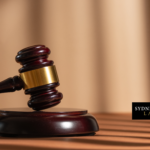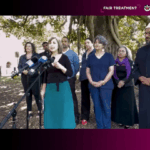Effect of New Technology on Court Trials

Technology is evolving at a staggering pace and this is never more evident than in the criminal justice system.
New technology is continually affecting every stage of the forensic process, from the reporting of crime to the types of evidence in court.
New advances in technology have led to trials being conducted in far more effective and ‘user friendly’ ways.
From using tablets in the courtroom, to digital re-enactments of alleged offences, to 360-degree panoramic walk throughs of crime scenes, the way technology is used in trials can have a significant impact on the digestibility of the court process from a jury’s perspective.
It is evident that juries prefer visual technology over the dry rhetoric of lawyers.
They are captivated by moving images and appear alert and attentive whilst re-enactments and CCTV footage are played.
This means that criminal lawyers who are up-to-date with digital technology and engage forensic experts for visual purposes can be in a far superior position when it comes to fighting serious criminal cases before juries than those who rely solely on words, sketches and still images.
360 degree crime scene imaging
In the UK earlier this year, 360-degree panoramic crime scene imagery was used in a murder trial for the first time.
Although forensic investigators have used the technology for years, this was the first time it had been allowed in a UK court and presented to a jury as admissible evidence.
This type of technology was also used to provide information in the Oscar Pistorius murder trial by showing a complete walk through of the accused’s apartment after the death of Pistorius’ girlfriend.
By viewing the images, the judge, jury and other people present could get a clear understanding of a crime scene and the layout of buildings, furniture and other items of significance.
In Australia, 360-degree crime scene imagery was first implemented in 2007 by Victoria Police, and it has spread to other states since then.
The tool works by using a specially designed camera that can take 360-degree, panoramic photographs in very high definition.
The tool then combines them to provide an interactive visual map of a crime scene.
So far in Australia, crime scene imagery taken in this manner has been used mostly for investigative purposes, but as the technology evolves and becomes more widespread, it is likely that it will start making a regular appearance in the courtroom.
Some of the stated benefits for using virtual crime scene images include that it gives the jury a better picture of the location, and helps them to visualise in their minds the events that are alleged to have happened.
3D crime scene imagery can also help witnesses remember more clearly and jog their recollection, which can be useful when obtaining statements both during an investigation and during the court process.
There are concerns about accuracy though.
As stated, visual evidence can be more captivating and compelling than evidence that is heard.
It is therefore possible that juries could be swayed to believe the prosecution’s story on the basis of this compelling visual evidence when it is presented as irrefutable fact, even if it’s not strictly accurate.
This is why criminal defence lawyers must remain vigilant and sceptical when it comes to scrutinising such evidence, cross-checking it against other material and engaging their own experts where appropriate to provide an opinion on it’s accuracy and reliability, and an alternative version where it might assist.
Tablets in the courtroom
Laptop computers are now commonplace in the courtroom and images, from pstill images to CCTV footage to police interviews, are often viewed by plugging laptops into the court’s audio-visual equipment.
Lawyers are increasingly using laptops and tablets to find legislation and case-law while sitting at the bar table in court.
And many lawyers nowadays are entering court dates into digital calendars on their smart phones whilst inside the courtroom – a system which has many benefits, including letting other lawyers within the firm immediately know to avoid particular court dates if they are also in court at the same time.
Taking the use of portable devices one step further, the Federal Circuit Court and Family Court of Australia have just announced plans to move to an electronic system over the next few years.
Currently, the storage of paper documents is costing $1 million a year due to the overwhelming volume of paperwork and records, and it is very laborious and time-consuming to retrieve information through this system.
The new system would see judges and juries equipped with tablet devices, which would enable them to download documents, legislation and evidence directly from a cloud-based platform and display them on a larger screen, or show others directly from their device.
It is anticipated that the greater use of portable devices in the court room will reduce the amount of time spent looking through legal documents to find paper-based legislation, improve the quality of the evidence provided via audio or visual methods, and give court staff access to the information they need instantly and conveniently.
This could potentially speed up the process considerably.
It would also enable juries to review evidence on an individual tablet, annotate documents and resize information to suit their requirements.
Currently, two judges have committed to a trial of the new system where they will be equipped with tablets and all documents submitted to their courtrooms will be viewed on the tablets instead of the paper versions.
With technology developing rapidly, there is no doubt that the trial process will be significantly affected over time – we believe for the better.
Speeding up court processes using technology could help resolve cases expeditiously and allow those facing charges to move on more quickly with their lives, as long as the technology involved is used fairly and not as a way to manipulate juries into believing inaccurate evidence.
And lawyers who refuse or fail to keep up with the changes will be left behind.






